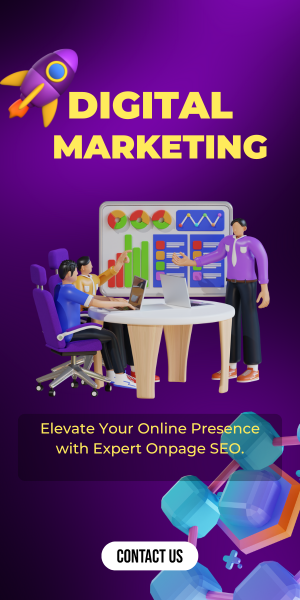Having a website serves a lot of purposes. Whether it is for an online portfolio, a start-up business or blogging platform; a website is expected to be readable, informative and responsive. Because one way or another, it may generate income in the long run. While some people choose to go with a digital marketing company, today we will talk about doing it DIY style.
It’s important to choose a platform that can be entrusted with your content, branding and that is able to back up your files. It should effectively reach the target audience and it definitely needs to be user-friendly. And that’s just the start of it all.
WordPress established its reputation of being a powerhouse of almost every great brand website. 34% of internet users all over the world, to be exact. Almost all companies that offer digital marketing services use WordPress. It assures its clients on a global scale and gives them full control in terms of customization and set-up.
CNN, TED, NFL, The New York Times, Forbes and eBay are just a few of the Fortune 500 companies that it serves.
How could a you utilize a WordPress website just like they did?
One action.
Follow their lead.
Here’s how to create a great WordPress site:
- FIRST THINGS FIRST: KNOW THE DIFFERENCES BETWEEN THE WORDPRESS PLANS – AND SELECT THE BEST ONE FOR YOU
Make a choice. WordPress.org provides a self-hosted domain that goes: www.mywebsite.com. This allows personalization of the website to effectively represent a user’s business worldwide.
While WordPress.com comes free, a user’s domain name tags WordPress along with it. It shows it this way: www.mywebsite.wordpress.com. This denotes a slight turn-off amongst consumers because it gives them the idea that the website is temporary and is no way professional. They somehow perceive this as some sort of a trial-and-error site.
Since businesses have gone through the process of establishing their website themselves or may have hired people to do so, it’s not good for the website to be unreliable or floating in the end.
The beauty of it is that it’s customizable, which is perfect if a user changes their mind. Yes, WordPress.org may be changed into WordPress.com. The user just has to everything with a domain name and just set it up easily with a third party as instructed.
If one of the goals is to keep it the longest time possible, establishing the website using WordPress.com may be the brightest move.
- SECURE A DOMAIN NAME THROUGH THE APPROPRIATE HOSTING PROVIDER
GoDaddy and Bluehost offer a wide range of services together with its list of domain names available for the user to choose from. Usually, Microsoft Office or Gmail is available for establishing a business email.
Security packages, SSL certificates, updates and website performance check-ups are some of the packages that may be good to have, for an additional fee. It pretty much walks a user through the importance of each. Usually, it’s the upgrading part that gets it out of hand. For a personal blog, go for the most basic. To sell something, most likely, bigger storage, more options; and a wider scope is needed. Whatever your plans, there will be s plan suitable for it available.
- INSTALL WORDPRESS AND FAMILIARIZE YOURSELF WITH ITS DASHBOARD
WordPress is pretty much a touch-and-go operable platform. It’s easy. Installing the software is probably the most favourable thing a user can do for itself as the host. Get familiarized with the basics through the tutorials it provides. Later on, a user may get creative after becoming well-versed on how to operate around the website builder. The more you know, the better the website you’ll be able to build.
- SET UP THE WEBSITE BY CHOOSING THE THEME
The dilemma lies in the number of themes you may choose from. For a user not to overspend time on this, that may lead to burnout without even starting a business yet, do take note of three things: Speed, performance, and appearance.
(1) The simpler the better. If the page size becomes unnecessarily big, it will slow down the website’s performance (not every target consumer has a speedy webserver).
(2) If users experience a complication with the website, they might end up giving up on it because of too many elements (it gets confusing). Keep it user-friendly.
(3) Do not overcrowd the website with features since it could be distracting in so many ways. There’s no other effective hook for turning a website visitor into a consumer than a single call-to-action button. So, give them one. Only one.
- BUILD YOUR PAGES AND ADD POSTS APPROPRIATELY
Posts and pages on a website make it appear authentic, readable, and consistent. This is what brands talk about most of the time; it’s how you establish identity and a brand.
The homepage must communicate what the website is for. The logo and tagline should be good enough to impress prospective buyers so that that call-to-action button may just be the next logical step. It’s a great thing once it starts to take effect.
A website needs to be continuously updated. Don’t let it sit up with posts that are months or years old. Include an informative description of products, pricing pages, customer reviews, and social media buttons.
- CUSTOMIZE THE WEBSITE AND INSTALL PLUGINS
Use plugins to tweak your website. Basic optimization comes from these in combination with a user’s creative side. It’s all there, just put it together. To those who are more knowledgeable about encoding, further enhancements may be done because of its HTML editing feature.
Just be careful as some plugins are not compatible with others. And updates could trigger a mess. There’s also a possibility of incorporating ads so that it can generate passive income. Just get a hold of the terms and agreements first to avoid any glitches.
A website should, on all accounts, appear smart, professional and alive. Don’t pour too many words on it. Get some images up and open it up to customer-generated content. Users love this chance of contributing artistic work online, without you having to pay them. Be open to opportunities like this for it will help the website running. After all, WordPress is open-source software so let the website source breath from its followers and customers.


